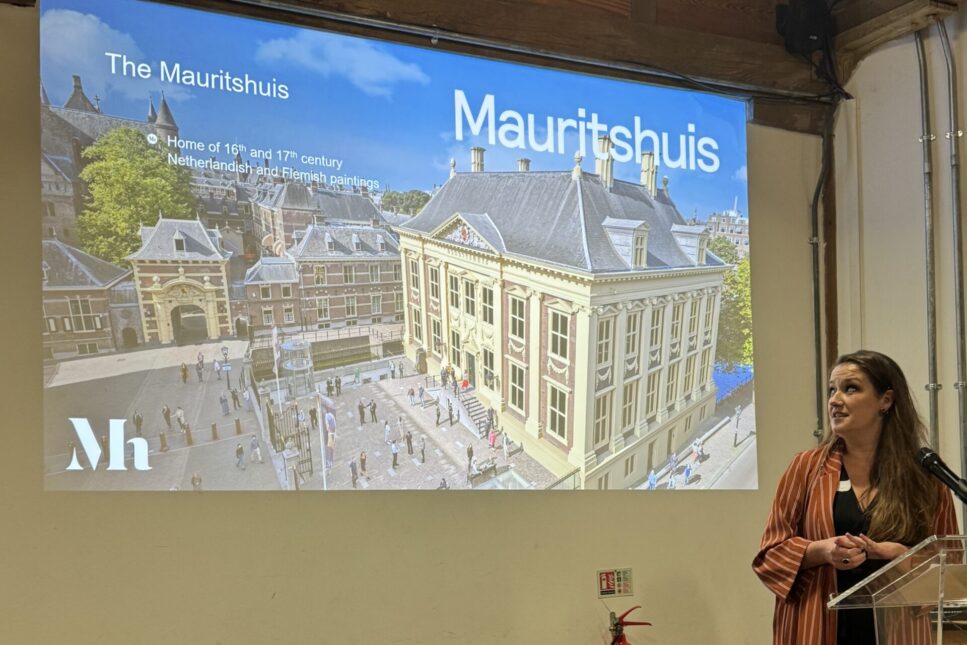
Image: Faye Cliné, Registrar, Mauritshuis presenting at the UKRG AGM
Written by Lizzie O’Neill, Digital Collections Manager, The Hunterian University of Glasgow
I was really excited to hear that there was to be a presentation on digital condition reporting at the AGM this year as like many museums, digital condition reporting was something my organisation grappled with during Covid.
Faye Cliné is the Registrar at the Mauritshuis, The Hague. Starting with an overview of the collections Faye explained that there are just 800 works in the collection and despite the reasonably small collection size, in 2022 there was 50 incoming loans and 29 outgoing loans. The relatively small size of the collection meant that the task of introducing digital condition reporting wasn’t too onerous, with the benefits easily outweighing the time and staff investment.
At the Mauritshuis, condition reporting is split into two reports: an internal report to check the loan’s suitability for travel, and an external report which travels with the work. In place of the traditional paper form the report is now available as a PDF form which Faye and her colleagues fill out using a tablet. The report contains many of the usual fields to be found in a condition report with lots of space at the end for additional comments, but the digital report really comes into its own with the images. Anyone who has been on a courier trip knows that the key to a good report is good high quality images with clear annotation. The digital report format allows for annotation using a stylus on a tablet with different coloured annotations, used to represent different issues.
The resulting digital report which is sent to the borrower in advance of the work arriving means that you never need to worry about forgetting to bring a copy of the report, you can easily access the report wherever you are in the world, and you no longer need to print off multiple copies of the report. Images are also higher quality and more up to date reflecting the current state of the work as opposed to when it was last photographed.
Faye did reflect on some of the challenges of introduction of the digital report, such as the challenges of storing them on SharePoint and the requirement for good Wi-Fi for them to work. There was also some staff training required particularly for curators used to the more traditional format of condition reporting. In summing up, Faye explained the benefits of DIY digital reporting as opposed to ready-made software (something which l have also explored in my own organisation) with the main benefits being that DIY is cheaper with no licensing requirements. PDF forms are also easy to use and design and you retain full ownership over your data.
The presentation was a really good example of an easy to use and cheap solution for making condition reports more sustainable and easy to use between lenders and borrowers alike. I am sure it provided lots to take away for those present on how to implement a similar solution at their own institution.

 Instagram
Instagram  LinkedIn
LinkedIn  Twitter
Twitter  My Account
My Account